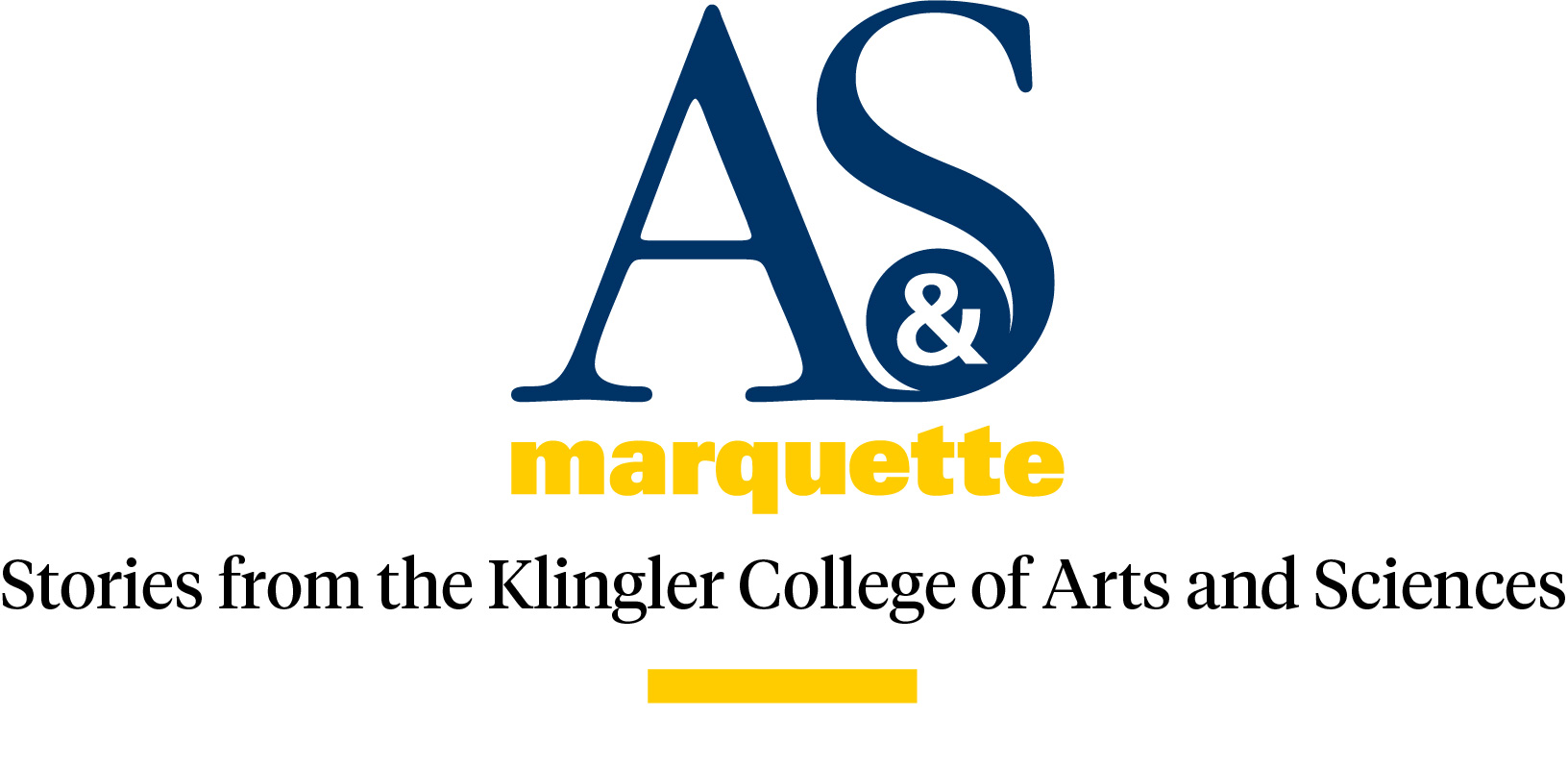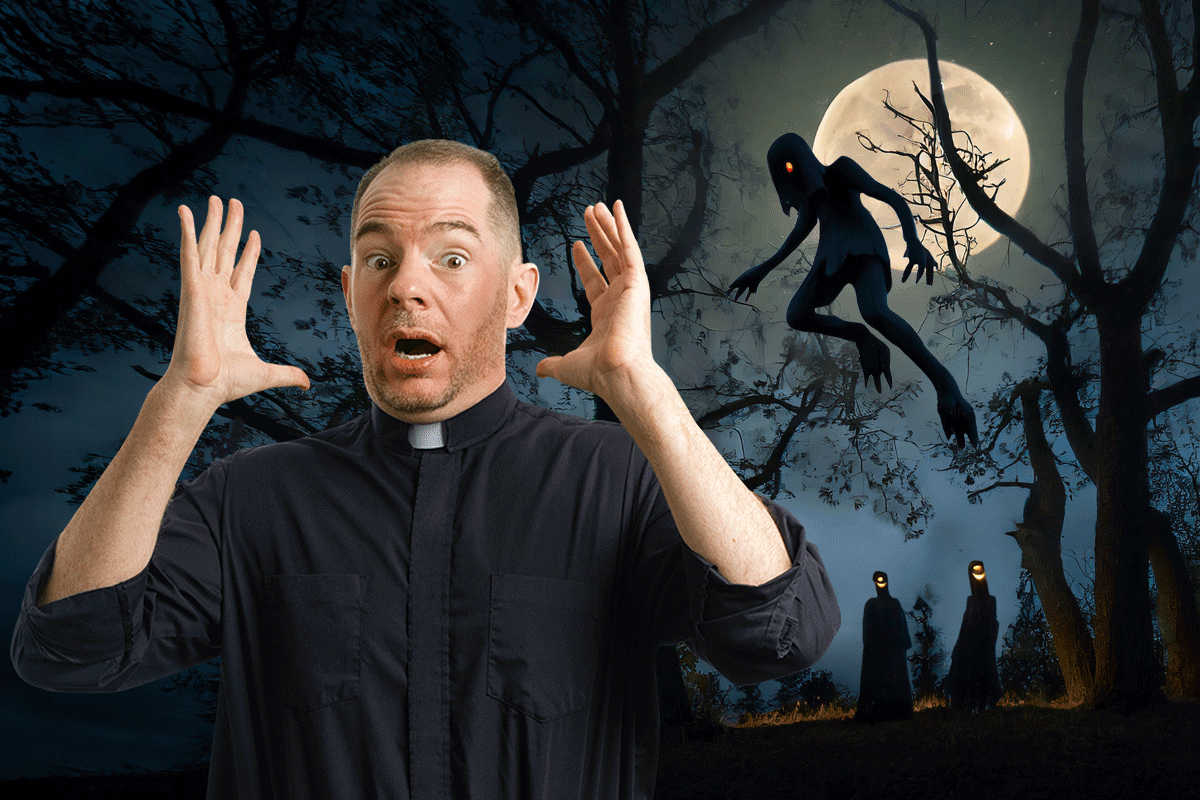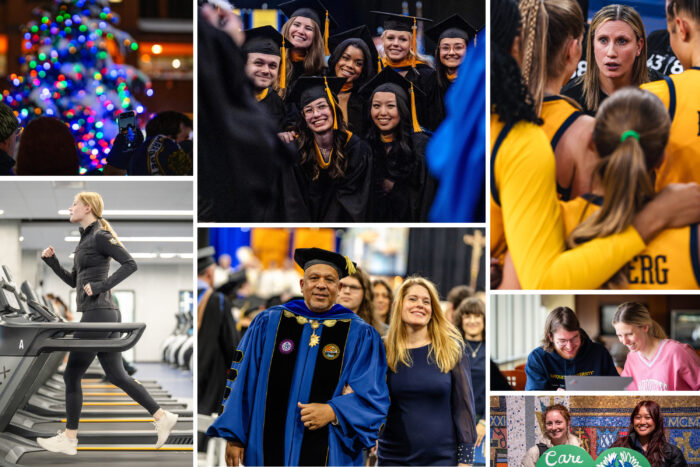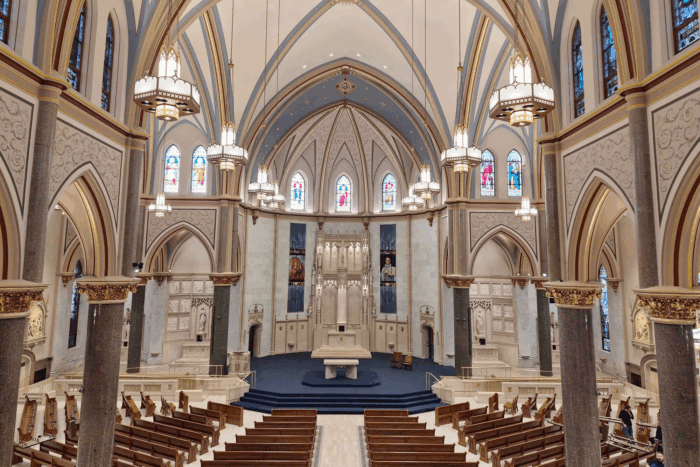Early in graduate studies, I learned an invaluable lesson: When others ask, “What are you writing about?” they are not often interested in a real answer. To spare inquirers a lecture about metaphysics or recent trends in German theology, I started to give one-sentence summaries of my projects and to redirect the conversation to something more interesting, like the weather or Taylor Swift.
So, when people asked what I was “working on” during my research leave, I had my pitch prepared. “I’m writing a book about the theology of horror.” But instead of a polite nod, my answer elicited responses ranging from skepticism — “Seriously? Is that a thing?”— to delight — “No way! That is so cool!”
When pressed about why I would undertake such a project, my answer tends to reflect my concerns as a priest and a professor: I write about horror because many of my students love it. St. Ignatius counseled early Jesuits to enter another’s door to bring them out our own. You could say, then, that I wrote Theology of Horror: The Hidden Depths of Popular Films (University of Notre Dame Press, 2024) in a missionary spirit. For in this book, I want to enter the unorthodox door of horror to uncover the genre’s theological depths. My conviction, here and in the Theology of Horror course I regularly teach, is that fans of horror are closet metaphysicians and theologians.
Don’t believe me? Let me make two observations. First, the religious landscape of college students is changing. When I poll students in class, I find an ever-increasing number of them to be religiously unaffiliated or to have disaffiliated from the tradition in which they were raised. For many of them, religious belief is simply not a pressing personal concern. At the same time, the most popular types of horror film among them are supernatural, if not religious, in nature. From billion-dollar franchises like The Conjuring and Insidious to indie films like Evil Dead and Terrifier 2, or films featuring demonic possession, exorcisms, spectral hauntings and paranormal bogeymen, the supernatural speaks to this age group. Indeed, what amazes me is that the same students who would never think of attending World Youth Day to catch sight of the Holy Father think nothing of queuing up to see The Pope’s Exorcist.
Yet religious believers and the skeptical fans of horror can agree on at least one point. Both, to use the words of the Nicene Creed, share an interest in “things visible and invisible.” Christian theology holds that believers can encounter the supernatural, can commune with God, by opening themselves and praying; fans of horror, by contrast, get to explore the threshold between the seen and the unseen, the immanent and the transcendent, by opening their wallets (or pulling out their phones) and paying for a ticket.
I love nothing more than turning down the lights, starting a film, and settling in with my students to experience the thrills and chills of scary movies. … Over the semester, I try to provide students with a new mode of perception, one that is attentive to epiphanies of the divine in a most unexpected place.
In writing this book, I wanted to serve as a traveling companion — or, better, a fellow theatregoer — with other horror fans. Mindful of St. Ignatius’ advice, I figured I could enter the doorway of horror and lead readers, chapter by chapter, to rethink their own theological beliefs. I am beyond grateful to Marquette for giving me a Way Klingler research semester to have the time to dedicate myself to this project. Each of the book’s 15 chapters treats one film — from Night of the Living Dead to Rosemary’s Baby to The Black Phone to, of course, The Exorcist — and teases out its philosophical and theological themes. Rather than telling readers about theology and horror, I hope the book invites readers to do theology by watching and reflecting on some iconic films. Of course, as a work of scholarship, I want Theology of Horror: The Hidden Depths of Popular Films to inform readers. But in inviting readers to undertake an unlikely pilgrimage, I hope the book works to transform how they watch these movies by equipping them with theological lenses. Even the most harrowing of horror films, when viewed with renewed senses, can become hallowed sites where unexpected epiphanies occur. The itinerary of the book, you might say, one that leads ex umbris ad lucem, “out of the shadows into the light.”
As a lifelong fan of scary movies, I appreciate that the weeks leading up to Halloween are filled with new theatrical releases and horror movie marathons on cable. I am especially fond of movies I watched at sleepovers or with my siblings late on Saturday nights. Icons of horror like Leatherface, Carrie, Freddy Krueger and Michael Myers provoked my imagination, leading me to wonder if maybe, just maybe, what happened in the movie could really happen. “What if,” I would muse as I drifted off to sleep, “it is not just a story?” The next morning, when my mom roused us from our beds and took us to Sunday Mass, those thoughts lingered. But at Mass, the icons of horror had to jockey for space with Jesus in my youthful imagination. Week after week, I weighed the world of horror against the world as revealed through the Bible and the liturgy. After many years, it finally hit me. On Saturdays, I was a passive spectator watching other people’s stories. On Sunday, I was being invited by faith to be an active participant in a still-unfolding narrative. In a sense, the icons of my favorite horror movies helped me to appreciate, and to take my place, in the story of Jesus Christ, the “Icon of the invisible God” (Colossians 1:15).
Such unexpected juxtapositions are part of the landscape of my course, too. I might not pull off a jump scare in every session, but I can usually get them to appreciate the theology often hidden in these films. For this reason, I love nothing more than turning down the lights, starting a film, and settling in with my students to experience the thrills and chills of scary movies. I want them to meet the icons of horror cinema. Yet as we reflect on these celluloid icons, I challenge them — and the readers of my book — to ponder if maybe, just maybe, we can find glimmers of divine light breaking through the darkness. Over the semester, I try to provide students with a new mode of perception, one that is attentive to epiphanies of the divine in a most unexpected place. Parents may look askance at the course, but it is remarkable how so dark a subject manner can be, when looked at critically and reflectively, profoundly luminous. The itinerary of my “The Theology of Horror” course, like my book, begins in shadow and fear. But with patience and perseverance, we learn to interpret the gestures of horror’s most famous icons — Freddy, Jason, Pinhead — as pointing our way ex umbris ad lucem, out of the darkness and into the light.




